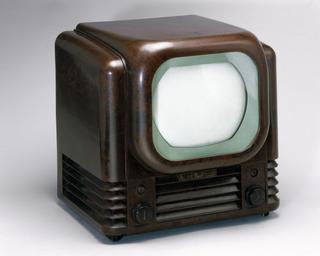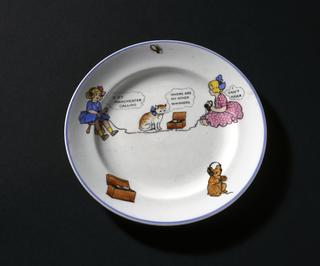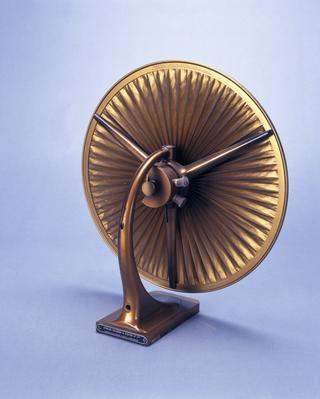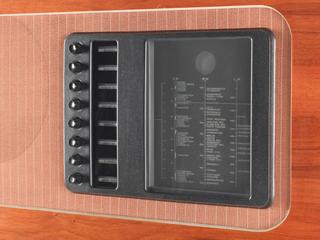
Marconi-Reisz transverse-current carbon microphone
- Made:
- 1925-1935 in United Kingdom





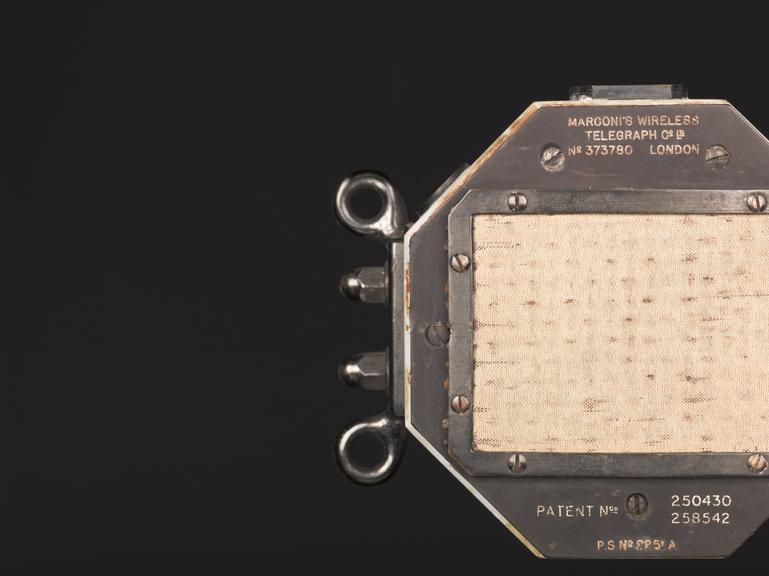


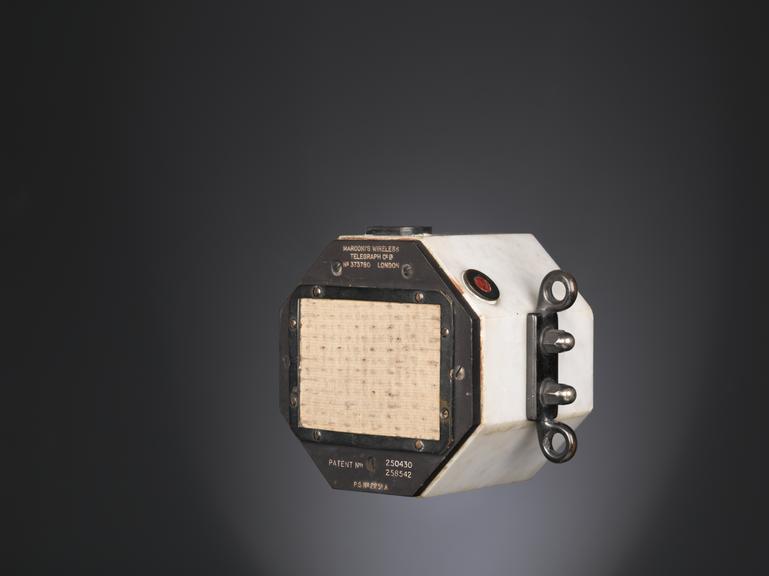
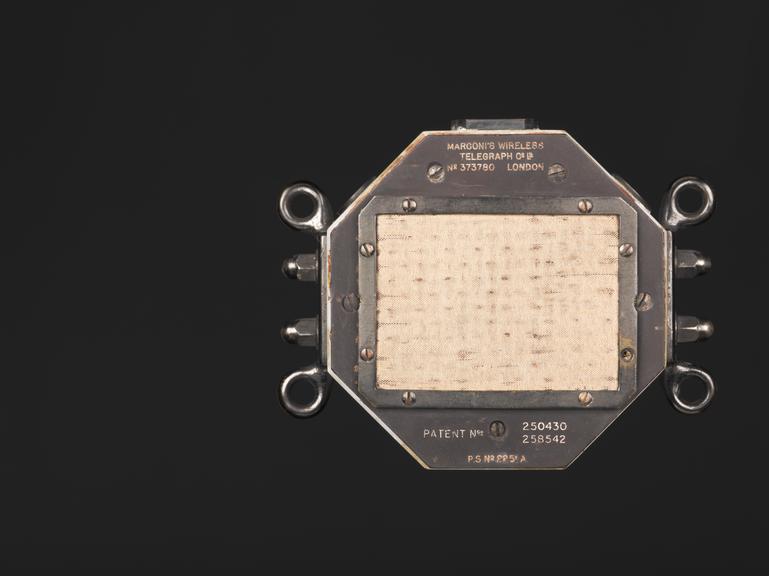
Marconi-Reisz transverse-current carbon microphone, invented by Georg Neumann, unknown maker, British, 1925-1935.
This was the BBC's standard microphone between 1926 and 1933. Within the heavy marble body of the microphone carbon granules fill a shallow space between electrodes placed along its shorter sides. As sound entered the microphone the sound waves compressed the carbon granules, affecting an electrical signal that could be transmitted by radio.
Details
- Category:
- Radio Communication
- Object Number:
- 1949-131
- Materials:
- marble (limestone) and metal (unknown)
- Measurements:
-
overall: 105 mm x 140 mm x 95 mm, 1.78kg
- type:
- microphone
- credit:
- Donated by the British Broadcasting Corporation.
